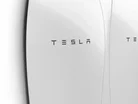Why utilities in Australia and New Zealand are choosing Tesla Powerwalls

Both home owners and a variety of businesses are keen to install Tesla’s Powerwall to maximise use of roof-top solar energy, as well as to provide back-up power. Several utilities across the globe are also developing innovative programs that also use Powerwalls to help balance the grid which will reduce investment costs that are ultimately passed on to all electricity consumers in the area.
Recently, two large utilities in New Zealand and Australia, Vector and South Australia Power Network (SAPN) have announced innovative Powerwall programs.
Vector, New Zealand’s largest electricity distributor, just announced they will provide 130 Tesla Powerwalls to schools, charities and deserving families through a local competition. These will not only benefit the competition winners, but will also benefit the greater community through the aggregation of Powerwalls to help balance the grid and reduce stress on the network.
Across the Tasman Sea in Australia, SAPN has also just announced a trial program to deploy an initial 100 home batteries and solar systems. This is the largest trial of its kind in Australia and will test the benefits of combining solar and energy storage to avoid building additional infrastructure to alleviate a network constraint.
Read the rest of this article in the Septemeber issue of Business Review Australia & Asia.
Follow @BizReviewAU and @MrNLon on Twitter.



